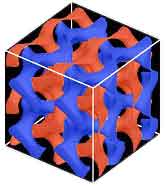Jeol Arm200f Manual Arts
JEOL ARM200F - Image Corrected. Jeol Arm200f Manual Arts Service. Omschrijving van de TEM ARM200F. ARM200F is the new state-of-the art probe-lens aberration corrected. November/December 2011 UK Issue 149 Plasma FIB Analysis of Through Silicon Vias p9 Secondary Electron Atomic Imaging in S/TEM pS5 Variable Pressure SEM of Plant Stigmata. Arm200f (jeol) Aberration Corrected TEM / STEM John M. Cowley Center for High Resolution Electron Microscopy (SCOB N109) The ARM200F is an aberration corrected STEM equipped with both an x-ray spectrometer and a special, newly developed electron spectrometer, with ultra-fast EELS that allows atomic level mapping.
The Jeol ARM200F. |
The Jeol ARM 200F is a world-class high-resolution (scanning) transmission electron microscope (S)TEM. The Warwick ARM 200F is aberration-corrected both in probe-forming optics (probe size FWHM <80 picometres) and in image-forming optics (image resolution <80 picometres). This allows atomic resolution imaging both in STEM and TEM modes, as shown in the examples (right).
The microscope has a Gatan Quantum electron energy loss spectrometer (EELS) to allow detection and quantification of the elemental composition down to the atomic level. Dual EELS allows both low-loss and core-loss regions of the spectrum to be collected simultaneously and a fast shutter allows data rates of up to 1000 spectra/second.
The microscope also currently has a 100mm2 Oxford Instruments windowless energy-dispersive X-ray (EDX) detector. This also yields composition maps with atomic resolution; both EDX and EELS spectra can be collected simultaneously at high data rates.
Manual Arts Senior High
Specifications and Capabilities
|
Example images

| Atomic resolution STEM image of MoSe2–WSe2 lateral monolayer semiconductor heterojunctions.1 |
Atomic resolution TEM image using exit wave reconstruction (EWR) of graphene with overlaid ball and stick model.2 |
Relevant Publications
Manual Arts Therapist
1 C. Nokia infinity best dongle crack download. Huang et al.Nature Materials, 2014, 13, 1096 Free font family.
Manual Arts High School
2 R.J. Kashtiban et al.Nature Comms, 2014, 5, 4902